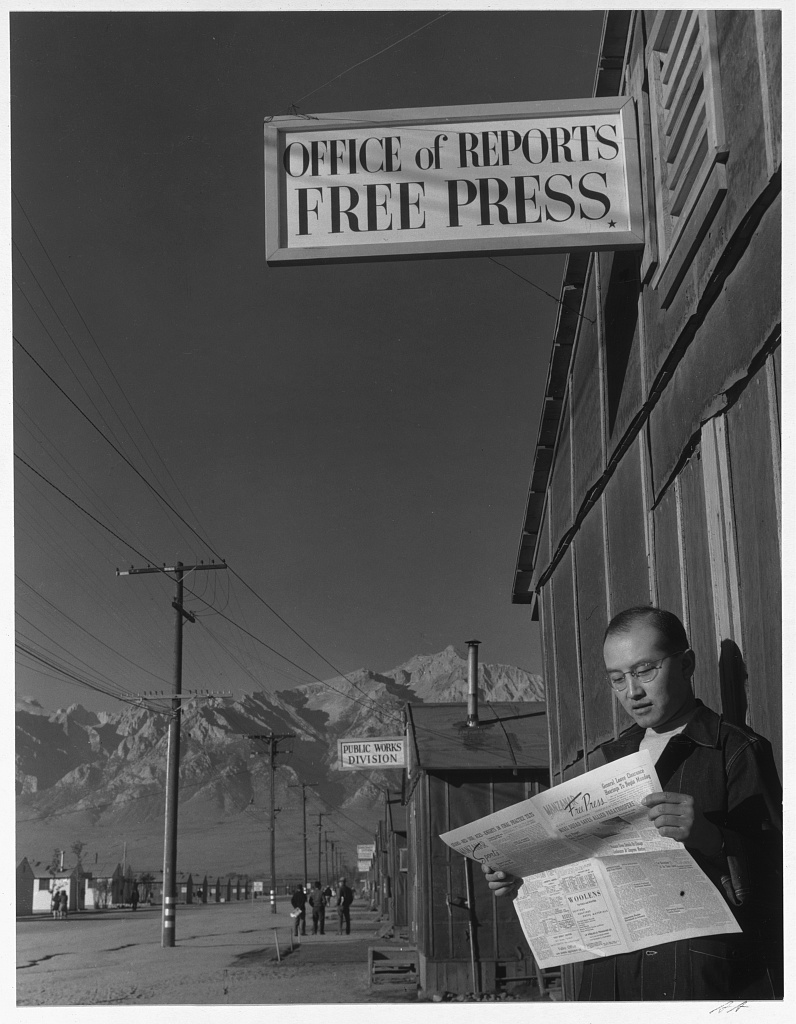Teaching with Primary Sources at MSU Denver hosted a workshop on February 10th, 2018 at the Colorado Council of the International Reading Association Conference.
 This conference provides us with a great opportunity to find new and engaging ways to integrate primary sources into literacy strategies for the K-12 classroom. After last year’s conference, we knew that the Library of Congress primary source collections and teaching strategies can be easily adapted to teach literacy skills, like consuming and producing information, 21st century media literacy, and evaluating messages from a variety of medium.
This conference provides us with a great opportunity to find new and engaging ways to integrate primary sources into literacy strategies for the K-12 classroom. After last year’s conference, we knew that the Library of Congress primary source collections and teaching strategies can be easily adapted to teach literacy skills, like consuming and producing information, 21st century media literacy, and evaluating messages from a variety of medium.
Below is a list of the literacy strategies we used and the primary sources that go along with them. Each of them were adapted from The Strategic Teacher: Selecting the Right Research-Based Strategy for Every Lesson.
Click on the links in the titles below to view the teaching strategy task cards.
Decision Maker
As an introductory activity to get everyone on the same line of thinking, we highlighted the benefits of the Teacher Annotated Resource Set for creating lesson plans and classroom activities.
The Decision Maker Strategy invites students to become personally involved in what they are studying and hones a highly personal and deeply analytical skill that is crucial to everyday life. The decision making skill spans from what kind of cereal we should eat to what type of evidence is most important for an argument.
Pair this strategy with content specific primary sources to engage your students in the research and argument development process.
Q Cards
A smaller part to a more in-depth game-based and student-centered learning activity, Q Cards help students understand the importance of sequential learning. This strategy asks students to engage in each of the Observe, Reflect, and Question portions of the Library of Congress Primary Source Analysis Tool, but asks them each to do it in a different order. How does making assumptions before observing affect our thinking? Why should we observe and make inferences before we question?
Helping students come to conclusions on their own about the importance of analysis, synthesis, and inquiry enables them to practice essential critical thinking skills in a purposeful way.
Pair this strategy with one or many primary sources for pre and post assessment. We used a Women’s Suffrage drawing called Suffrage kewpies.
Inductive Learning
Inductive learning gives students a way to explore abstract and complex topics by breaking them down into more concrete and easy to understand groups or categories. Small student groups analyze a single or collection of primary sources, categorize their observations, reflections, and questions into categories of their choosing, create an essential question or conclusion based on their findings, and then reflect on the process.
To deepen student thinking, student groups engage in the categorization process two more times, but they aren’t allowed to use categories that were used before. You’ll notice that as students categorize, they start with typical categories and end up with thinking about primary source content in a new and exciting way. For example, students start with categories about the types of primary sources and end up with the emotional effects on the viewer.
Pair this strategy with 5-10 primary sources from a Digital Collection at the Library of Congress.
Metaphorical Expression
Because we were running out of time, we abbreviated the Metaphorical Expression strategy and incorporated elements of it into Inductive Learning. Instead of having students create an essential question or conclusion, we had educators create a metaphor for their findings.
Metaphorical thinking is a skill that benefits students tenfold by allowing them to relate and compare hard to understand concepts with something that they are more familiar with. How is friendship like a raft? How was Japanese Relocation like a play? How is a mathematical equation like tug of war? Answering each of these questions adds depth to student understanding and improves comprehension.
Pair this strategy with a lesson about overarching concepts like freedom, patriotism, or symbolism, and a primary source(s) that also speaks to that concept. We used the Ansel Adams Manzanar collection from the Library of Congress, as well as the Geo-aligned Railroad Annotated Resource Set.
Circle of Knowledge
The next three strategies we presented as a task rotation and two primary sources . Each educator was given a different strategy and were asked to go through them on the song, “Don’t bite the hand that’s feeding you”. The historical Sheet Music, and an Audio Recording from 1915.
Circle of Knowledge connects personal experience with primary sources and engages students in a discussion. They learn how to listen, integrate information, and respond to a range of ideas in order to formulate and revise their own thinking.
Do You Hear What I Hear?
This strategy emphasizes listening, prepares students for discussions, and improves literacy skills by engaging with their peers through the observe, reflect, question primary source analysis. Students will also create a set of statements or questions associated with the primary source to solidify their thinking in writing.
Window Notes
Window Notes gives students a purposeful avenue for analyzing primary sources through facts, feelings, questions, and ideas. It helps connect students to the content through their experiences and feelings, while also allowing them to discuss with their peers.
 Thank you to Rolly Schendel and CCIRA for giving us this opportunity to share Library of Congress primary sources and adaptable Literacy strategies with them. We look forward to continued collaboration with them.
Thank you to Rolly Schendel and CCIRA for giving us this opportunity to share Library of Congress primary sources and adaptable Literacy strategies with them. We look forward to continued collaboration with them.
View the workshop agenda with links to the activities and primary sources here.
Sign up for the CCIRA newsletter, the Colorado Communicator, for primary source literacy strategies each month.
TPS at MSU Denver also hosted two conference sessions on Literacy and Primary Sources. You can view the presentation and notes here.





